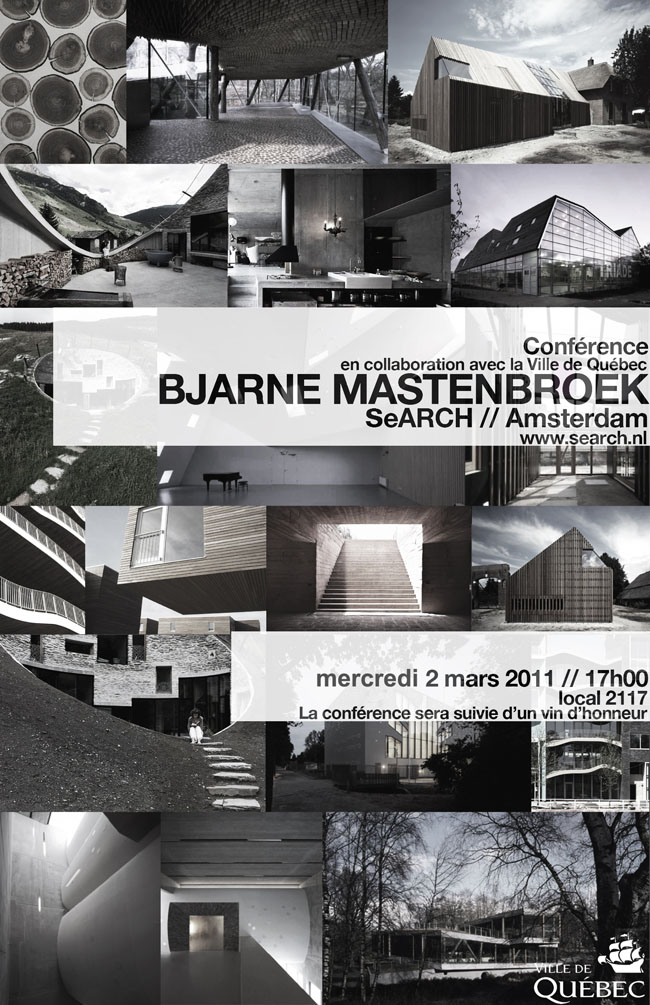11 juin 2025
2 mars 2011, 17h00
Bjarne Mastenbroek présente: « SeARCH »
local 2117

Innovation
Architects must focus on creating spaces and cities that are democratic, sensible, long-lasting and tolerant. It sounds simple and obvious, but it isn’t. SeARCH questions the merits and banalities of modern civilization, so well exhibited by the contemporary city. We try to (re)connect cultural artifacts with genuine natural elements. Design teams collaborate with different disciplines to experiment and test the results of collective design sessions, in order to give an opportunity to innovative proposals.
In order to find you have to SeARCH.
SeARCH stands for Stedenbouw en ARCHitectuur (Urban Planning & Architecture).
Our projects are conceived as landscapes – the most essential and generous element. Without boundaries, landscapes are endless and open; they connect architecture with the urban, interior with exterior. Through the emphasis on landscapes, SeARCH promotes a high degree of sustainability and environmental awareness within their projects. Being Dutch, we are well aware of the scarcity of land and believe strongly in using this resource more intelligently in order to give ‘nature’ more space to survive.
Inspiration
When it comes to ideas, everyday life is a ‘horn of plenty’. Our strategy is pragmatic; we assemble information and forms and establish novel relationships between them. The outcome is a collection of highly specific buildings that dovetail with history and function. In our opinion the context, i.e. that which already exists, is a starting point, not an authoritative guidebook. We want to free our architecture from superimposed rules and regularities, making it unpredictable and at the same time self evident.
What sets SeARCH apart?
– Architecture that strengthens the surrounding landscape, rather than dominating or ignoring it.
– Spaces that are dramatically transparent, light filled, welcoming, and clear about their function.
– Our ability to revitalize, redefine and expand existing buildings and neighbourhoods.
– Innovative techniques, like double ground use, hiding and intertwining buildings and traffic flows.
– Cultural and special buildings that create environmental awareness and encourage sustainable behaviour.
Source: SeARCH